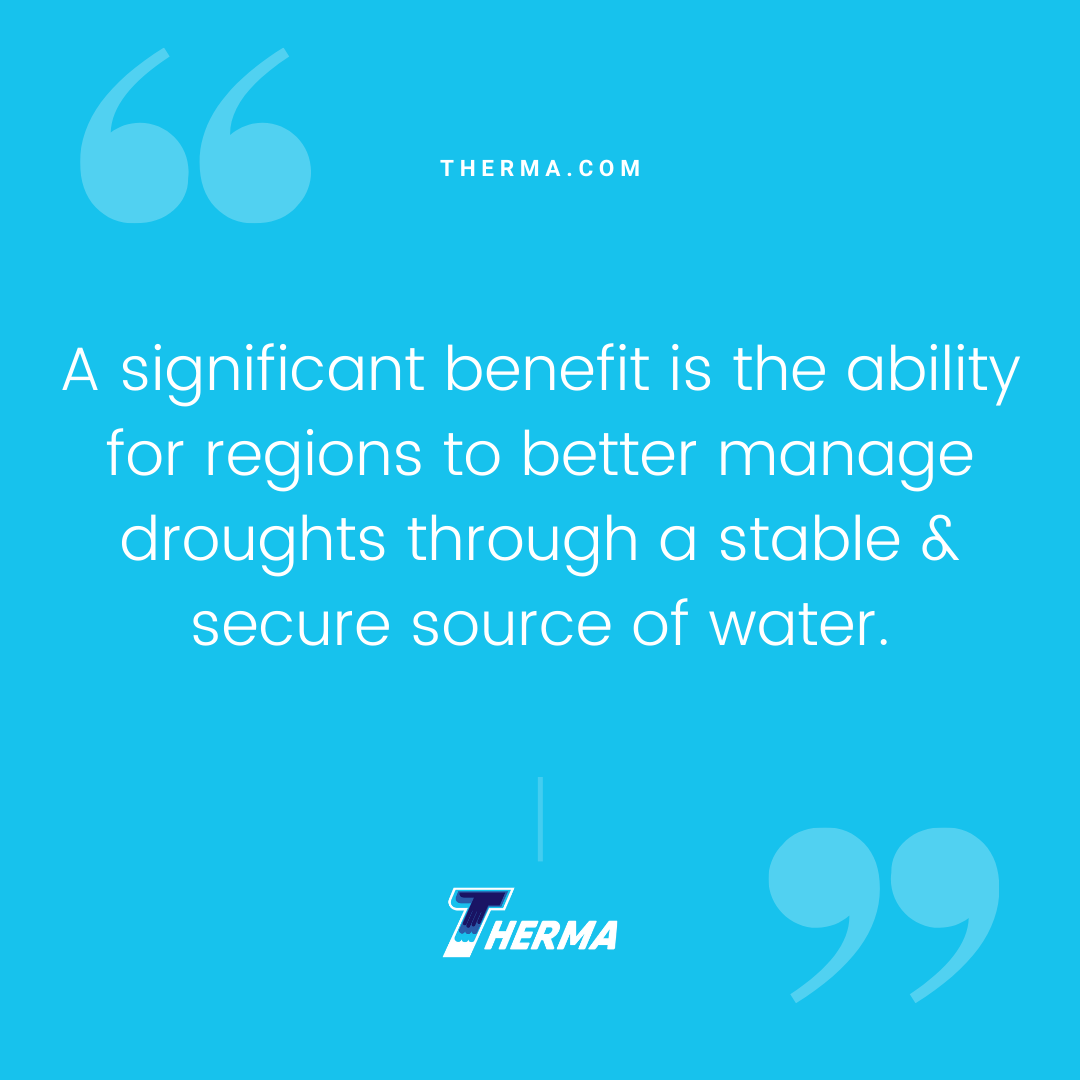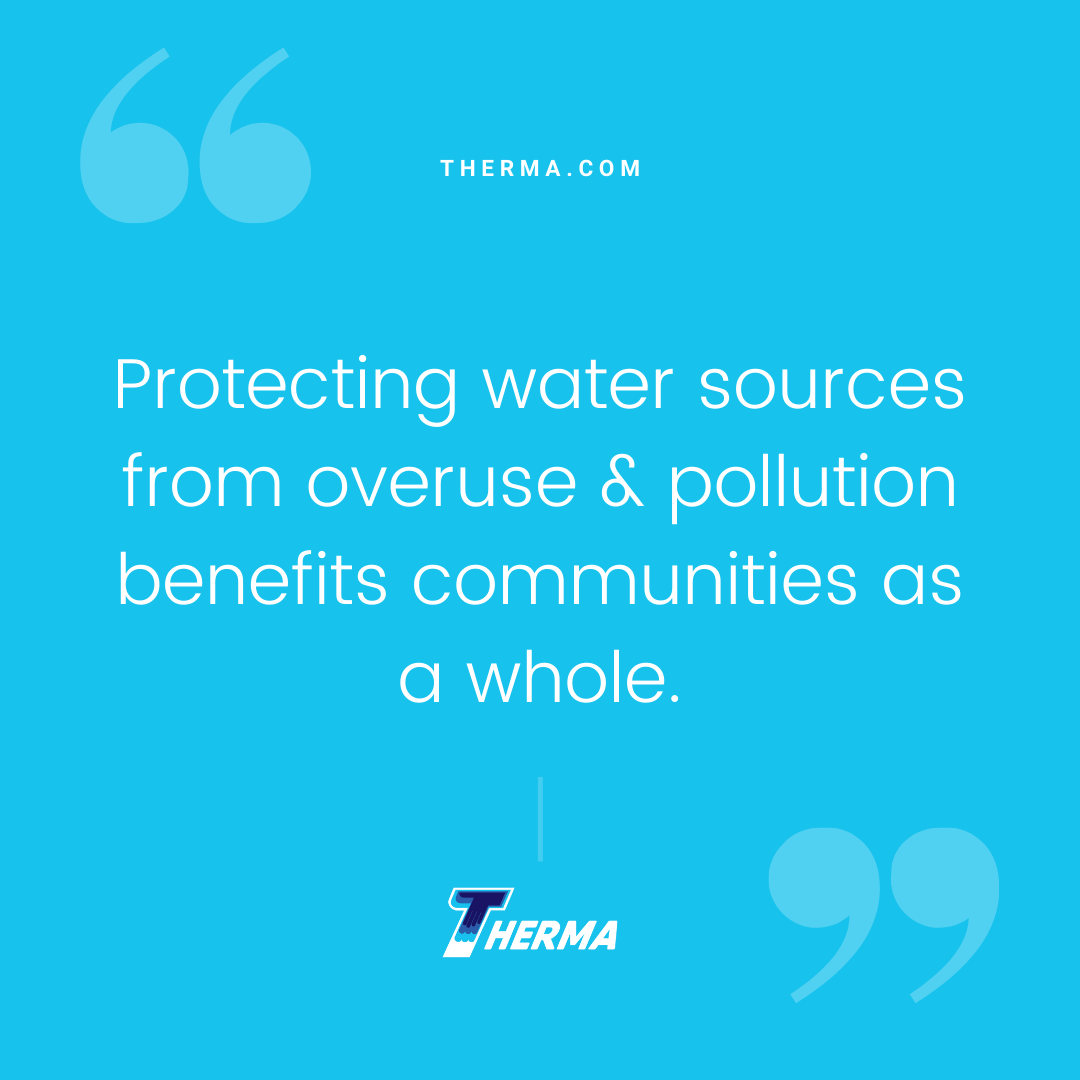by Patti Dees
Water conservation focuses on reducing and reusing water. The goal is to reduce strain on local resources, cut pollution and of course, save money. However, the impact of commercial and industrial water conservation extends far beyond a single building.
Water Conservation Saves Money
Cost savings are a significant motivator for managers and owners pursuing water-conservation plans for their buildings. Both existing buildings and new construction can save money with water conservation. Estimates for water savings range from 15 to 50% with a return on investment of 4 years or less. Benefits depend on the type of facility, but lower utility costs for water and sewerage and increased asset value of the building are just the beginning.
Examples of other cost benefits:
- Landscaping designs which focus on water efficiency with native or drought-resistant plants use less water but also cost less for upkeep and maintenance since they do not need mowing or frequent fertilizing.
- Alternative use for effluent from single-pass cooling equipment puts already-purchased water to work a second time around.
- By designing with water conservation in mind, engineers of new construction can use smaller-diameter piping or fewer piping runs. Not only does this lower construction costs, but some utilities charge less for smaller distribution lines at the meter.
The indirect benefits extend to energy costs. In California, 19% of energy use is for water treatment and distribution. Reducing water use lowers the energy production demand for the region. With many power plants using water in the power generation process, lower energy demands further reduce the water use in an area. The result is lower and more predictable utility costs for both water and power.

Water Conservation Protects Natural Resources
Fresh water is a finite resource. Protecting water sources from overuse and pollution benefits communities as a whole. While cost savings make water conservation plans attractive, the broader effects on the environment are difficult to quantify.
Water conservation is part of sustainable building initiatives. These initiatives aim to minimize the impact that facilities have on their local and regional environments. This benefits more than facility occupants too. A significant benefit is the ability for regions to better manage droughts through a stable and secure source of water.
The gains seen through water conservation extend to pollution control. Pollution negatively affects the stable and secure water sources that facility water conservation efforts are trying to protect. Reusing water and using reclaimed water decreases the volume sent to water treatment facilities. Benefits include:
- With less water requiring treatment, fewer chemicals are used and the risk of pollution is minimized.
- The need for new construction of water treatment and distribution facilities is reduced or pushed out to the future. This does more than keep costs lower for their customers. It limits environmental disruptions such as runoff from construction sites that create additional burdens on stormwater drain systems or contribute to pollution from oil and other contaminants.
- Some sources of reclaimed water contain nutrients that would otherwise be lost with effluent entering waterways. Excess nutrients can poison fish and cause algae blooms.

Water Conservation Consulting with Therma
Implementing a water conservation plan via investing in water efficient fixtures and appliances, greywater systems and other water strategies can save owners and facility managers money in operations and maintenance. Reducing waste and protecting water sources ensures local communities see fewer surprises in their water and power bills, and fare better during water emergencies.
With sustainability measures, everyone wins. Let Therma help your facility save water today. Contact us today!
Patti draws on her background as a chemical engineer to share information with readers on technology, manufacturing, and construction.
Sources
South Florida Water Management District – Lowering Operating Costs for Commercial and Institutional Buildings through Water Use Efficiency Improvements
Natural Resources Defense Council – Water Efficiency Saves Energy: Reducing Global Warming Pollution Through Water Use Strategies
Core – Realizing the Benefits From Water Conservation
Whole Building Design Guide – Water Conservation
Whole Building Design Guide – Protect And Conserve Water







